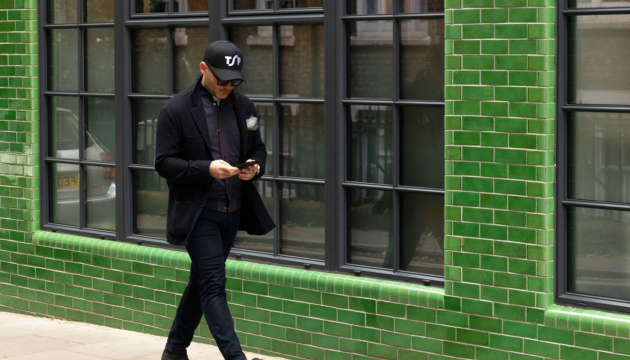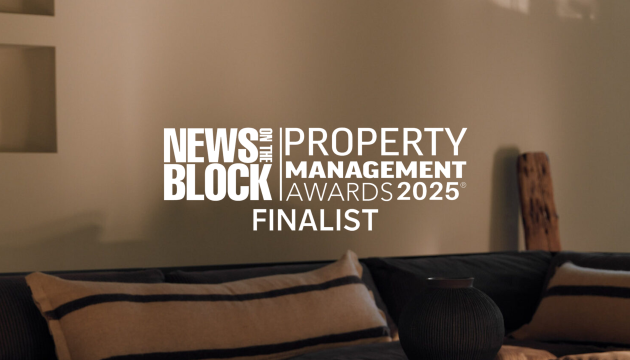Our mission at TSP is to leave buildings in a better state than we found them. We do this by considerately upgrading London’s old stock. Rethroning the Great Dames, as we call it.
It is part of the reason we pursued B Corp in 2021. This global certification recognises businesses with high social and environmental standards – and it is booming.
“B Corp is for businesses – it’s not for non-profits. They want to see you make money. They want to see you grow.”
Hosted by ADP Architecture, TSP was invited to join a roundtable for B Corp leaders in the built environment.
What challenges and opportunities does B Corp present for our sector? Discover in the panel discussion key takeaways.
PANELLISTS
- Tom White – Impact Lead, ADP
- Craig Cullimore – Chair, ADP
- Mia Brown – Marketing Assistant, TSP
- Marian Ferguson – Founding Director, Energylab
- Rion Willard – Host, Business of Architecture UK Podcast
- Mark Skelton – CEO, Temple
- Charlotte Robertson – General Manager, Ellandi
- Mica Janiv – Chief Values Officer, CYD Connects
–
Becoming a B Corp
Certifying as a B Corp takes an immense amount of work and time. The process centres on a lengthy assessment, the B Impact Assessment (BIA), which divides into five impact areas. To achieve B Corp status, businesses need to score at least 80 points: the average business scores 50.9.
Willard describes the BIA as “a lot more thorough than something like the ISO for sustainability and other accreditations.” But those around the table generally agreed that this effort paid off. Part of this value comes down to B Corp’s uniquely holistic scope. Mica says,
“I don’t think there’s another thing like it: global, cross-sector, consumer-facing and B2B-facing.”
A Wider Ecosystem
But what, if anything, changes for those businesses who choose to become B Corps? Craig emphasises that B Corp shouldn’t be seen as a radical business decision: often, it will fall naturally out of the company’s wider vision and goals. “For our day-to-day business, it hasn’t affected us because it was what we were doing anyway. We have a series of lenses that we use to look at our projects, and that was the same before B Corp as it is now: sustainability, belonging and engagement.”
However, others at the table are quick to highlight areas where B Corp has made an important difference.
“The difference it has made to us is that it’s opened us up to a network that we wouldn’t necessarily have tapped into,” says Ferguson. “We’re finding that our reach is now further: we’re meeting organisations and people we wouldn’t necessarily have met”.
This sense of a wider ecosystem resonates with Brown. “At TSP, we do a lot of gifting – for our tenants, partners, clients. I started looking for suitable B Corp brands to buy from – now we exclusively support B Corps.
“Once you start supporting B Corps, you wonder why you’d ever buy a meaningless present again. The rippling positive impact feels right.”
A Generational Divide
While certifying opens businesses up to new contacts, not all potential partners will see its value. “Most of our clients want to do something ESG, but need more guidance to really understand what that means,” says Ferguson. This lack of knowledge (or buy-in) extends to B Corp and seems to vary significantly by the type of client. Robertson explains:
“We work with everyone from international investors, coming in to invest in shopping centres in the UK, right through to local authorities. The councils are so happy that we’re a B Corp – but we’re having to explain to our international investors what it is. They’re very sceptical.”
This leads into an important question. Should being a B Corp affect decisions about the types of clients or projects we engage with? White notes that opinions are split:
“Should we only work with people who share our values and can easily collaborate – or should we seek out clients who we can try and influence to have better practices?”
Cullimore is fully aware of this quandary. “We’re actually working with one of the big national developers because we think they could do more, and the numbers of properties they deliver are huge compared to the smaller developers – so if we can get them to make a 10% difference, it will have a bigger impact. But if they’re not listening, then we’ll review whether that’s the type of client we want to work with.”
The BIA’s five key “impact areas” cover every aspect of a business’ impact: governance structures to staff benefits. For built environment companies, there is also an “impact business model” (IBM) section that recognises the significant impact of projects that we work on.
It assesses aspects including stakeholder engagement, certifications such as LEED, and projects benefiting disadvantaged communities. This is important: as White puts it,
“A building on its own is just a building, it’s just a thing – but the people in it and the communities that it sustains are so important.”
Skelton agrees. Rather than being about a physical building, he points out, “it comes back to need. So often the need is poorly understood or very tightly defined. How can that place meet the needs that we don’t even understand yet, of a group or community that hasn’t even defined itself?”
Key to this is engaging with the people affected by your projects, and genuinely listening to them. “We try and have empathy with the people who will eventually be in our buildings,” says Cullimore.
“You need that holistic approach: rather than just focusing on carbon, you need it to be something that people like using. B Corp brings those elements together.”
Janiv points out here that the key thing is not so much providing these kinds of benefits as part of your business, but integrating those benefits into what you do.
“B Corp application is for businesses – it’s not for charities or non-profits. They want to see you make money. They want to see you grow.”
Rather than encouraging businesses to do good alongside their day-to-day work, B Corp is about aligning the two – so that profit and purpose support each other. “It’s part of this larger movement, trying to change our entire economic system.”
Challenges and Opportunities
Becoming a B Corp in the built environment is not without its challenges. For one, the assessment isn’t perfect – frustrating, but understandable given its ambitious scope (covering every sector in every country).
Janiv describes the built environment version of the BIA as “the least nuanced of all the permutations of the assessment that I’ve seen”. As Cullimore points out, part of the problem is that “there are loads of criteria out there. There’s LETI, there’s RIBA 2030, there’s BREEAM and WELL Standard. But the more specific to the country that the scoring is, the better it will be.”
Still, specificity creates its own challenges. “However much you want to tailor it,” says Skelton, “that means you’re untailoring it for someone else. Or just making it incredibly complicated.”
B Lab – the organisation behind B Corp – is continually reviewing the assessment and making changes in response to feedback. Currently, they’re planning a major overhaul to the certification process, where businesses will need to meet minimum criteria across each impact area to certify.
This should address some concerns raised about greenwashing, where large businesses that fall short in some areas have overcompensated in others to achieve B Corp – without fixing ongoing issues. Robertson sees this as a watershed moment, but one which might have unintended consequences for businesses already struggling with the demands of certification.
“I would encourage smaller businesses to be doing B Corp now, because you can be quite broad in your interpretation of your answers. I’m sure that will change.”
As Ferguson sees it, these growing pains are a symptom of enormous opportunity.
“It’s a growing movement within the built environment. As more built environment professionals get accredited, it’s an opportunity to collaborate, and be a united force for good.”
–
👉 Read the full insight paper HERE
👉 Read about our B Corp journey HERE
Featured Stories & Insights
 17th November 25
17th November 25
Lessons Learnt from 2025 | by Zac Goodman
The market shifted (again), expectations changed (again), and the way people use space evolved in...
Read More 10th November 25
10th November 25
From Vauxhall to Value: How Aldgate Became London’s Charity Heartland
TSP’s Jonathan shares his perspective on why Aldgate has become the go-to destination for London’s...
Read More 30th October 25
30th October 25
Five Commercial Property Trends for 2026
As 2025 comes to a close, the UK commercial property market has been shaped by...
Read More 13th October 25
13th October 25
TSP Named Finalist at the 2025 Property Management Awards
LONDON, 13th October 2025 – TSP has been shortlisted for Boutique Property Management Company of...
Read More 1st October 25
1st October 25
Greener Offices for Charities
Sustainability has moved from being a “nice to have” to an essential requirement for charities,...
Read More 29th September 25
29th September 25
Community in The Office: Why does it matter?
The Spaces to Places: Voice of the Customer 2025 report makes one thing clear: people...
Read MoreView all